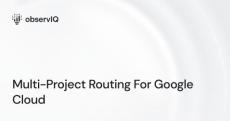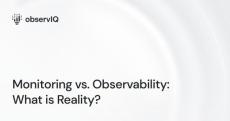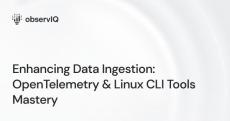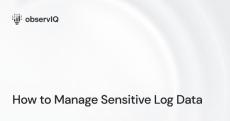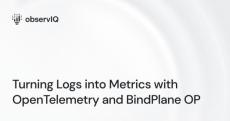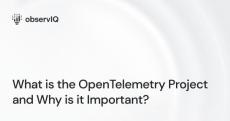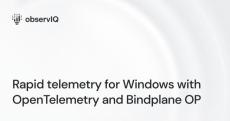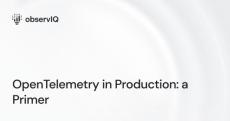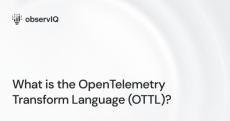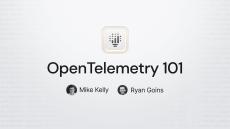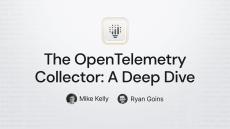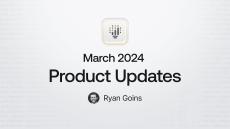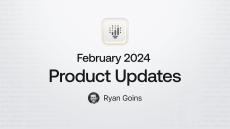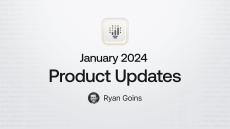|
By Dylan Myers
When sending data to Google Cloud, like logs, metrics, or traces, it can be beneficial to split the data up across multiple projects. This division may be necessary since each team has its own project, a central project is used for security audit logs, or for any other reason that your organization has. BindPlane has effective tools to manage this process. In this walkthrough, we will add fields to telemetry entries, allowing us to associate entries with a specific project and properly route them.
Before we start, I have a confession: I absolutely love Digg (people are still Digging things, right?) errr...Reddit. It actually is my front page to the internet, where I research upgrades for my home lab/VR/other niche hobbies, watch silly videos, ingest low-effort memes, judge if people are ‘AHs’ or not on /r/amitheasshole, and occasionally talk trash to other Redditors about my Michigan-based sports teams.
|
By Dylan Myers
While OpenTelemetry (OTel) supports a wide variety of data sources and is constantly evolving to add more, there are still many data sources for which no receiver exists. Thankfully, OTel contains receivers that accept raw data over a TCP or UDP connection. This blog unveils how to leverage Linux Command Line Interface (CLI) tools, creating efficient data pipelines for ingestion through OTel's TCP receiver.
|
By Joe Howell
According to Statistia, the total number of data breaches reached an all-time high of 3,205 in 2023, affecting more than 350 million individuals worldwide. These breaches primarily occurred in the Healthcare, Financial Services, Manufacturing, Professional Services, and Technology sectors. The mishandling of sensitive log data provides an on-ramp to many of the most common attack vectors.
|
By Joe Howell
Turning logs into metrics isn’t a new concept. A version of this functionality is implemented in most agents, visualization tools, and backends. It’s everywhere because converting logs to metrics has many practical applications and is one of the fundamental mechanisms for controlling log volume in a telemetry pipeline. In this post, I’ll briefly overview log-based metrics, explain why they matter, and provide examples of how to build them using OpenTelemetry and BindPlane OP.
|
By Joe Howell
At observIQ, we are big believers and contributors to the OpenTelemetry project. In 2023, we noticed project awareness reached an all-time high as we attended trade shows like KubeCon and Monitorama. The project’s benefits of flexibility, performance, and vendor agnosticism have been making their rounds; we’ve seen a groundswell of customer interest.
|
By Joe Howell
At observIQ, we’re constantly shipping new features to help users get the most out of BindPlane. In case you missed it, here’s a roundup of all the BindPlane news, updates, and improvements you should know about.
|
By Joe Howell
At observIQ, we’ve seen continuous customer interest in scalable and performant observability solutions for Windows environments. As of 2023, Windows is estimated to be deployed to 75% of desktops worldwide. Unsurprisingly, we commonly speak to CTOs, DevOps, and IT managers responsible for managing fleets of thousands of Windows-based end-user and point-of-sale systems in the Financial, Healthcare, Insurance, and Education sectors.
|
By Joseph Howell
At observIQ, we’re big believers and contributors to the OpenTelemetry project. In 2023, we saw project awareness reach an all-time high as we attended tradeshows like KubeCon and Monitorama. The project’s benefits of flexibility, performance, and vendor agnosticism have been making their rounds; we’ve seen a groundswell of customer interest.
|
By Joe Howell
The OpenTelemetry Transformation Language, or OTTL for short, offers a powerful way to manipulate telemetry data within the OpenTelemetry Collector. It can be leveraged in conjunction with OpenTelemetry processors (such as filter, routing, and transform), core components of the OpenTelemetry Collector. It caters to a range of tasks from simple alterations to complex changes.
|
By ObservIQ
As your systems grow, so do the challenges of managing high-volume telemetry data. From horizontal scalability strategies to efficient data aggregation and storage techniques, we'll cover everything you need to know to keep pace with your expanding infrastructure. Don't let scalability constraints hinder your observability efforts—learn how OpenTelemetry can empower you to manage high volumes of telemetry data effectively and efficiently.
|
By ObservIQ
Craft an observability pipeline that offers unparalleled insights into your systems and applications. Watch as we explore the art of constructing an OpenTelemetry observability pipeline, from instrumenting your codebase to effectively analyzing and visualizing telemetry data. Whether you're aiming to enhance troubleshooting, optimize performance, or gain a deeper understanding of your environment, this video series will equip you with the knowledge and tools to elevate your observability game.
|
By ObservIQ
Used by the world's largest organizations, OpenTelemetry has become the open-source standard for collecting and transforming telemetry data. I Listen and learn all about what you should consider before adopting OpenTelemetry and the steps to take as you roll out to production.
|
By ObservIQ
Delve into the intricate workings of the OpenTelemetry Collector in this comprehensive webinar. Watch as we explore advanced features, optimization techniques, and best practices for maximizing the efficiency of your telemetry data collection. Whether you're a seasoned user or just getting started, this deep dive promises to unlock invaluable insights into harnessing the full potential of the OpenTelemetry Collector.
|
By ObservIQ
Ready to tailor your telemetry data collection to fit your exact needs? Watch as we go step-by-step through constructing a custom OpenTelemetry Collector. From defining requirements to implementing custom processors and exporters, leave this feeling empowered to create a collector perfectly aligned with your infrastructure and observability goals.
|
By ObservIQ
Businesses require a single cohesive view across all systems as they increasingly shift to running today's modern interconnected application stacks.
- May 2024 (8)
- April 2024 (2)
- March 2024 (7)
- February 2024 (3)
- October 2023 (6)
- September 2023 (7)
- August 2023 (8)
- July 2023 (10)
- June 2023 (6)
- May 2023 (8)
- April 2023 (6)
- March 2023 (4)
- January 2023 (2)
- December 2022 (3)
- November 2022 (6)
- October 2022 (4)
- September 2022 (3)
- August 2022 (7)
- July 2022 (10)
- June 2022 (4)
- May 2022 (6)
- April 2022 (1)
- March 2022 (1)
- January 2022 (1)
- December 2021 (1)
- November 2021 (3)
- October 2021 (6)
- September 2021 (11)
- August 2021 (11)
- July 2021 (5)
- June 2021 (3)
- May 2021 (2)
- April 2021 (2)
- March 2021 (3)
- January 2021 (3)
- September 2020 (1)
- July 2020 (3)
Built by engineers for engineers, observIQ's solutions accelerate, simplify, and enhance observability across today's hybrid environments.
Our mission is to build the best open source observability solutions for DevOps and ITOps. Our open source log agent is a highly configurable, high-performance agent made for ELK logging within the ELK stack, featuring a full library of pre-built log plugins to support your existing applications.
Benefits of observIQ Cloud:
- Deploy In Minutes: Quickly configure end-to-end log management using one-line agent installation commands, guided remote configuration, and over 40 pre-built integrations.
- Aggregate Logs At Scale: Our high performance, open source log agent, Stanza, is designed with performance and resilience in mind, allowing you to confidently deploy at any scale.
- Utilize Powerful Visualization and Analysis: Search, filter, and visualize your events with ease using our customized version of Kibana. Dashboards are auto-installed for each integration so you can get to root cause quickly.
- Reduce MTTR With Simplified Diagnosis: Logs are automatically parsed and enriched with critical environment information, providing the context needed to easily trace events to the failing application, container, or service.
- Enable Immediate Response: Using customizable threshold-based alerts, you can notify on critical events from your application or infrastructure. Leverage your existing alerting workflows using e-mail or 3rd party applications like Slack and Pagerduty.
- Apply Simple Lifecycle Management: Manage your fleet of agents and integrations, all from a user-friendly interface. Save time by updating all of your agents with a single click.
The intuitive log management platform that ITOps and DevOps actually want to use.


